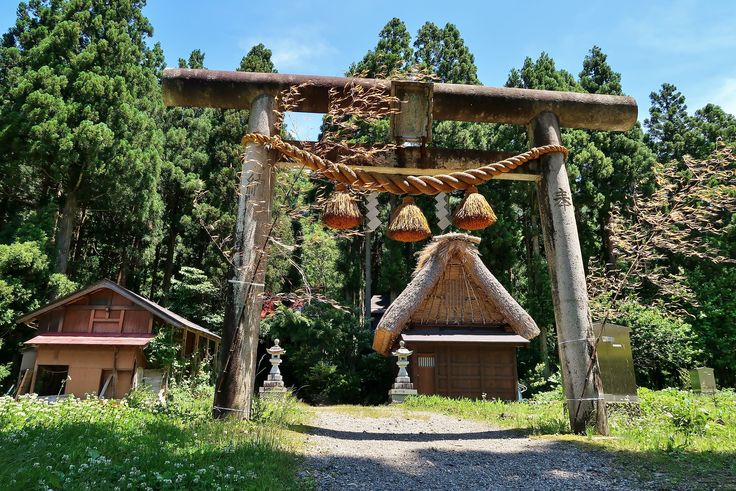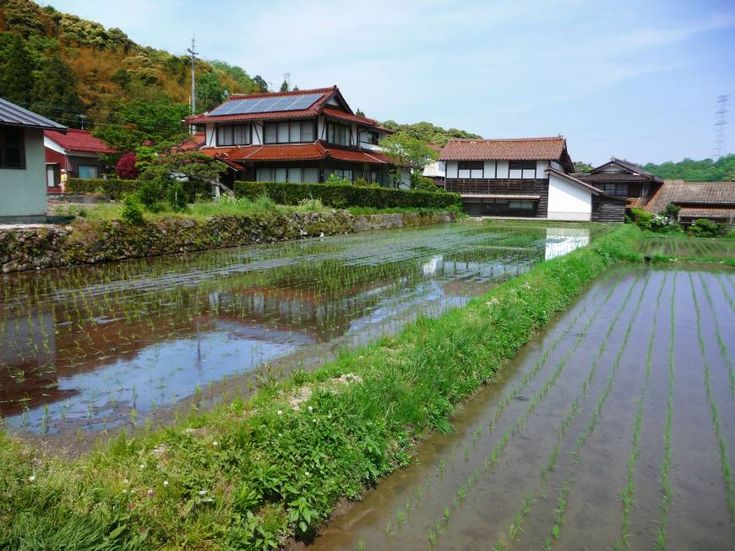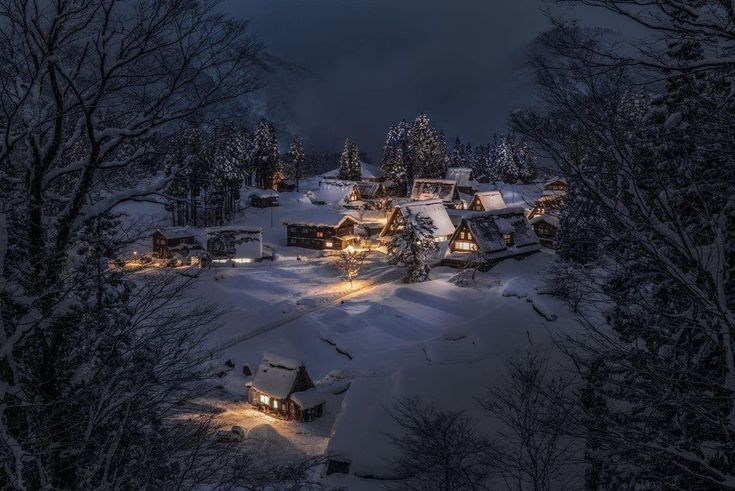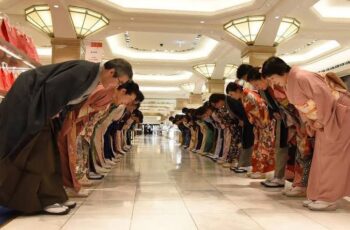The mists clung to Gokayama like a shy lover, veiling the steep, thatched roofs of its gassho-zukuri farmhouses. Here, in the deeper folds of Toyama Prefecture, the world felt softer, the silence more profound. Saki had come to Gokayama seeking this very hush. She’d visited its more famous neighbor, Shirakawa-go, and while its beauty was undeniable, a certain quietude she craved had seemed just out of reach amidst the admiring crowds. Gokayama, she’d heard, held its secrets closer.
The Ainokura and Suganuma hamlets, the heart of Gokayama’s UNESCO World Heritage distinction, were smaller, more intimately woven into the dramatic landscape. The gassho-zukuri houses, their prayer-hands roofs just as steeply pitched to shed the heavy winter snows, felt less like exhibits and more like ancient beings, slumbering peacefully. Saki, a textile artist by trade, found herself captivated by the textures – the coarse, weathered thatch, the dark, oiled wood, the moss that painted emerald accents on stone walls.

Her small rented room was in a gassho farmhouse run by an elderly couple, Mr. and Mrs. Tanaka. In the evenings, after the day-trippers had thinned to nothing, the true character of Gokayama would emerge. Sometimes, from a neighboring house, the mournful, rhythmic strains of a kokiriko-bushi folk song would drift through the cool mountain air. The sound, carried by the distinct, percussive clicking of sasara (wooden clappers) and the tapping of kokiriko (bamboo sticks), seemed to rise from the very stones and soil of the valley. It spoke of hardship, of harvests, of lives lived in rhythm with the uncompromising seasons – a musical tapestry as old as the mountains themselves.
“The songs tell our history,” Mrs. Tanaka explained one evening, her hands, gnarled by time, deftly stirring tea. “They kept our spirits strong through long winters, and celebrated the brief, precious summers.”
Saki soon discovered another of Gokayama’s treasures: traditional washi paper-making. Down a winding path, near a rushing stream, was a small workshop where an artisan named Kenzo practiced the ancient craft. The air inside was damp and fragrant with the smell of boiling kozo (mulberry bark). Kenzo, a man of few words but expressive hands, allowed Saki to watch. She was mesmerized by the rhythmic dip and sway as he scooped the fibrous pulp onto a bamboo screen, the water draining away to leave a delicate, translucent sheet. Each piece was unique, imbued with the character of the mountain water and the subtle imperfections that spoke of human touch.
“This paper breathes,” Kenzo said one day, holding a finished sheet up to the light. “Like the thatch on our roofs, like the wood of our homes. It connects us to the forest, to the water.”
Saki began to understand. Gokayama wasn’t just quieter; it was a place of profound, internal activity. The silence wasn’t empty; it was filled with the subtle sounds of creation – the swish of pulp in water, the rustle of mulberry leaves, the soft thrum of a loom in a distant house, the almost inaudible whisper of history in the ancient beams above.
Winter in Gokayama was an experience of sublime isolation. Snow fell relentlessly, burying the landscape in a deep, pristine blanket. The world shrank to the warm glow of the irori hearth and the company of the Tanakas. The folk songs felt even more poignant then, a thread of human warmth against the vast, cold emptiness. Saki found herself sketching the snow-laden roofs, trying to capture their stoic beauty, the way they seemed to bow in reverence to the power of nature. She even tried her hand at washi-making under Kenzo’s patient guidance, feeling the surprising strength of the delicate fibers, the meditative quality of the repetitive motions.

When spring finally unfurled, it was with a shy, tender beauty. The thawing snow fed the streams, and the mountainsides burst into a soft green. The rice paddies were tilled and flooded, reflecting the clear sky. The sound of the kokiriko seemed to carry a lighter, more hopeful tune.
Saki realized Gokayama hadn’t just offered her quiet; it had offered her a different way of seeing, of listening. It was a place where tradition wasn’t a relic, but a living, breathing part of daily existence. The gassho-zukuri architecture was a testament to this, as were the folk songs that echoed through the valleys and the delicate strength of the washi paper crafted by hand.
One evening, sitting on the porch of the Tanaka’s home, Saki looked out at the village. The last light of day painted the thatched roofs in gold. A faint melody, a kokiriko-bushi, drifted from somewhere unseen. It wasn’t the grand, often photographed vista of Shirakawa-go, but something more intimate, more personal. This was Gokayama – a sanctuary where the soul could find its own quiet rhythm, a place where the land, the homes, the songs, and the crafts were all woven together into a beautiful, enduring silence. And in that silence, Saki had found her peace.
Saki’s planned week in Gokayama stretched into a month, then two. The rhythm of the valley had seeped into her bones, a slow, deliberate pulse that quieted the frantic tempo she’d carried from the city. She found herself rising with the sun, not to an alarm, but to the chirping of sparrows nesting in the eaves of the Tanakas’ gassho-zukuri farmhouse, or the distant, methodical sound of Mr. Tanaka tending his small vegetable patch.
Her mornings were often spent with Kenzo at his washi workshop. He was a patient, if taciturn, teacher. Saki learned the painstaking process of preparing the kozo bark – stripping it, boiling it, beating it into pulp. Her city-softened hands, initially clumsy and prone to blistering, slowly toughened. Kenzo never chided her mistakes, merely demonstrating again with an economy of movement that was almost hypnotic. “The paper teaches patience,” he’d once remarked, his gaze fixed on the swirling fibers in the vat. “It cannot be rushed. Like life in these mountains.”
Saki began to experiment, trying to dye the washi pulp with natural pigments she foraged under Mrs. Tanaka’s guidance – berries for a soft purple, onion skins for a muted gold, indigo leaves from a small patch Kenzo cultivated. She wasn’t just making paper; she was learning the language of the land, translating its subtle hues into tangible form. She imagined her textiles interwoven with this paper, carrying the scent of Gokayama’s streams and forests.
The folk songs, the kokiriko-bushi and the mugiya-bushi, became the soundtrack to her days. She learned that many of the songs were linked to specific tasks – rice planting, harvesting, weaving. One evening, Mrs. Tanaka, her voice surprisingly clear and strong for her age, sang a lullaby that had been passed down through her family for generations. The melody was simple, almost stark, yet it held a universe of maternal love and resilience. “Our songs are our roots,” Mrs. Tanaka said, her eyes misting slightly. “They remind us who we are, where we come from, even when the snows are deep and the world outside forgets us.”
Saki discovered that Gokayama’s seclusion wasn’t about isolation, but about a different kind of connection. It was a connection born of shared reliance. One week, a section of thatch on a neighboring farmhouse needed urgent repair before the autumn rains. The call for yui – communal help – went out, not with a shout, but with a quiet understanding. Men and women from Ainokura and nearby Suganuma arrived, their movements practiced, their collaboration seamless. Saki, though unskilled in thatching, was welcomed to help carry bundles of fresh reeds and prepare food for the workers. There was a quiet camaraderie, a shared purpose that was deeply moving. The repaired roof, gleaming gold in the afternoon sun, was a testament to this collective spirit.

Her textile art began to change. The bold, abstract designs she’d favored in Tokyo gave way to more organic forms, inspired by the patterns of bark, the flow of water, the intricate weave of the thatch. She started incorporating small pieces of her own handmade washi into her weavings, the delicate paper contrasting with the rougher textures of wool and linen. It felt like she was weaving the very essence of Gokayama into her work.
One crisp autumn afternoon, Saki took a walk deeper into the surrounding mountains than she usually ventured. The path was narrow, overgrown in places, the air sharp with the scent of pine and decaying leaves. She reached a small, hidden shrine, almost swallowed by the forest, its stone lantern coated in a thick carpet of moss. Sitting on a weathered stone bench, she looked out at the valley below. The gassho-zukuri houses of Ainokura were tiny, like mushrooms sprouting from the earth. There was no sound but the wind sighing through the cryptomeria trees and the distant caw of a crow.
In that profound stillness, a wave of clarity washed over her. The “quiet” she had sought wasn’t just an absence of noise, but a presence – the presence of history, of nature, of a deeply rooted way of life. It was a meditative space where the unnecessary distractions of the modern world fell away, allowing for a deeper connection to oneself and the world. Gokayama wasn’t a place to escape from, but a place to return to – to a more fundamental, more authentic way of being.
As winter began to dust the mountain peaks with its first snows, Saki knew her time in Gokayama was drawing to a close, at least for now. She had commitments back in the city. But it wasn’t a sad departure. She carried Gokayama within her now: in the calluses on her hands, in the scent of kozo that clung faintly to her clothes, in the melodies of the folk songs that played in her mind, and in the reams of washi paper, each sheet a whisper of the valley’s soul.
On her last evening, Mr. Tanaka brought out his sasara, the intricate wooden clappers. He didn’t play a full song, just a few rhythmic phrases, the clicking sounds sharp and clear in the frosty air. “The rhythm of Gokayama,” he said with a rare smile. “It will stay with you.”
And Saki knew he was right. The woven silence of Gokayama, its folk songs, its ancient crafts, and its quiet, resilient spirit had become a part of her own intricate tapestry, a serene and enduring thread she would carry with her, wherever she went. The village, more secluded and perhaps less celebrated than its neighbor, had offered her a gift far more precious than picturesque views: it had offered her a piece of its heart, and in doing so, helped her find a quieter, more resonant part of her own.

